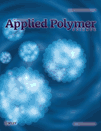Pressurized water pellets and supercritical nitrogen in injection molding
Abstract
In this article, a novel approach to decrease cycle time without compromising part dimensional stability developed in our group is compared with the use of supercritical nitrogen in injection molding. In this new approach, water is pre-pressurized into the polymer pellets containing water carrier particles such as activated carbon (AC), thus no molding equipment modifications are required. Because of its high porosity, AC can trap water inside the particle, thus improving water compatibility with hydrophobic polymers for less water loss during handling and in the barrel during injection molding. After mixing, the polymer with the water carrier, the pellets are batch pressurized with water at a controlled temperature and pressure. The water containing pellets are then fed into the hopper of the injection molding machine. Parts with similar densities were molded and mechanical properties and warpage for both processes compared. It was found that the warpage and mechanical properties of the method presented here are comparable with the use of supercritical nitrogen, which is used in microcellular injection molding. © 2012 Wiley Periodicals, Inc. J. Appl. Polym. Sci., 2013




